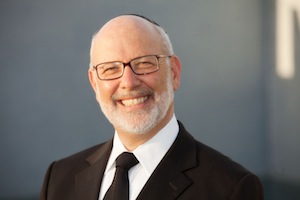Halacha synchronizes us and unites us in ways that chronology and geography cannot.
Two events are chronologically synchronized if they occur at the same moment irrespective of where in the world they occur.Halachick synchronicity is different. It is a fascinating idea different from the idea of chronological synchronicity.
Halachik synchronicity occurs when two events happen at the same moment of the day in their respective locations. So an event at sunrise in Vancouver is synchronized with an event that takes place at sunrise in Jerusalem even though there are ten hours between those two events. This is because time in halachah is a different idea from time in chronology.
Time in Halacha is a dimension of reality rather than a point on a time line. So for example, one of the dimensions of a "Lulav" is the time of Sucot. The same object in a different time is a palm branch and not a "Lulav." In this case time defines the object. Similarly, bread during the year is not "Chameitz" (that is the halachik concept of "chameitz") it changes its status from a kosher object to a non-kosher object just because of the added dimension of the time ofPesach. In fact flour that has been in contact with water for 17 minutes is kosher le'pesach and if it has been in contact with water for 19 minutes it is not. The dimension of time changes its status irrespective of its chemical properties.
The time for davening Shachris is from Neitz hachamah (sunrise) to a time four twelfths of a day later. When two people are daveningshachris at Neitz they are part of the same nation davening at the same time even though their tefilos, due to geographical reasons, are many hours apart.
When Benei Yisrael celebrated their first Pesach in the desert we are told: "And they performed the avodah of Pesach in the first month, on the fourteenth day of the month, in the afternoon, in Midbar Sinai" (Bamidbar 9:5). They performed it in desert time, says the MeshechChochma, not in Egypt time even though they were celebrating an event that happened in Egypt and there was a small difference in the times of noon and sunset between those two locations. This is because time is a dimension of a mitzvah and is determined according to the co-ordinates of the place of the mitzvah. It is for this reason that the whole world celebrated the creation of the sun on the day before Pesach this year, at different times. Even though chronologically we should all of celebrated it at sunrise time inYerushalayim, we didn't. We all celebrated it at sunrise time in our own geographies. But halachiklly, we were all celebrating it at the same moment, at the moment of sunrise on the 14th day of Nissan: a difficult concept for the Western mind.
My son Moshe, independently of my thought but at the same moment I was developing it, used a similar idea to explain a Gemarraon Parshat Shelach (the parsha read this week in Israel).
"And all the congregation raised their voices; and the nation cried that night" (Bamidbar 14:1) The Gemarra says: "Hashem said, you are crying for no reason, I will set up this day (Tisha Be'av) as a day to cry for generations to come" (Sotah 35a). The Or Hachaimexplains that the Gemarra sees this meaning from the different subjects of the sentence: The congregation raised their voices, but the nation cried.
My son explains that the idea of nation (as opposed to congregation "Eidah") transcends time. You cannot be part of a congregationtoday that will meet tomorrow. But Am Yisrael that stood at Sinai, is the same Am (nation) as Am Yisrael today. It is separated neither by place nor by time. That is essential to the very idea of Am, nation. The congregation that raised its voice was a congregation of people living at that time. But the nation that cried cries every year on TishaBe'Av. We cry simultaneously even if we are in different time zones, we cry simultaneously even if we are in different generations or different centuries. This is the nature of Halachik time. It is this idea of halachik time that creates a sense of unity among our people that transcends both time and place.
I, and many like me, frequently travel across time zones and my family is spread across vast time zones. I am often plagued by the sense of distance and separation that results in a deep, painful feeling of separateness and loneliness. But still I bless my children every Friday night at times that for some of them are not Friday night at all. Yet how comforting to know that in Halachik time, my berachotare synchronized with them. We make Kiddush at the same times, celebrate Shabbat and Yamim Tovim at the same time. Halachasynchronizes us and unites us as a family and as a people in ways that chronology and geography cannot. What magical wonder!








